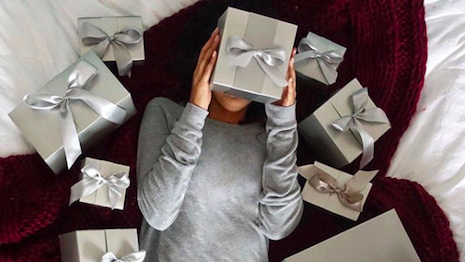- About
- Subscribe Now
- New York,
December 18, 2017

 Affluent consumers are looking for technology and home goods. Image credit: Nordstrom
Affluent consumers are looking for technology and home goods. Image credit: Nordstrom
Affluent Americans have been more likely than the general population to search for expensive gadgets and pricier fashion for the holidays, according to new data from Hitwise.
The audience insights tool studied the top search terms of consumers with household incomes of $250,000 or more, and found that their preferences geared more toward technology and practicality. While this consumer set has the means to purchase luxury goods, no luxury-specific search terms made the rankings.
"With an expected hefty tax cut ahead, affluent Americans have even greater economic means to buy expensive presents—for themselves and others—this holiday season," said John Fetto, senior analyst research and marketing at Hitwise.
Key words
Hitwise shared the top five search terms in four categories, revealing what affluents are seeking for their home, their yard and garage, their children and their wardrobes.
For the outdoors, products such as a Masterbuilt electric smoker, leaf vacuum, LED shop lights and propane heater found an audience with affluents, with these shoppers searching for these at rates higher than the average consumer. For their cars, those studied want a dashboard camera.
Indoor wishlists include entertainment items such as a 65-inch television or Google Chromecast. Shoppers are also interested in a Dyson V8 Absolute vacuum, Magic Bullet and a Peloton bike, reflecting affluents’ interest in wellness.
Peloton bikes were commonly searched by affluent consumers. Image credit: Peloton
For their children, well-off shoppers are searching for technology such as child-friendly tablets, a Nintendo Super NES Classic Edition and an Xbox One Elite Controller. Legos also made the list twice, with Lego tables and Lego Star Wars commonly sought out.
The only brand names to make the top five searches in apparel and accessories were Coach and Fitbit, as consumers looked for a “Coach wallet” or a Fitbit Surge. They also sought out apparel using generic search terms such as party dresses, heated jackets and plus-size lingerie.
Coach was the only fashion brand mentioned in the top five wardrobe searches. Image credit: Coach
According to a 2016 report from Adgooroo, advertisers use about a third of their total annual paid search budget in the fourth quarter. During these three months, advertisers spend the most money on paid search in December, with the total spend by retailers on U.S. Google desktop ads reaching $543 million in December 2015.
This spending can pay off, as consumers are also more likely to click ads during the last quarter than they are earlier in the year.
Optimistic outlook
Affluent consumers in the U.S. are going into the holidays with a more positive financial outlook. The subset of the population studied by Hitwise, which represents the top 2 percent of households, is set for tax breaks under a proposed bill making its way through Congress.
The luxury market had a difficult year, but the upcoming holiday season could give the sector a much-needed push as general sales are set to increase by more than 4 percent, according to Deloitte.
Deloitte’s holiday retail forecast predicts that sales will reach more than $1.04 trillion. The study also shows that disposable income will be more present than last year, with 81 percent of survey takers claiming their financial situation is better than last year.
Affluent individuals whose net worth exceeds $100,000 plan to do 57 percent of their holiday shopping online, making a search strategy important (see story).
TD Bank's Retail Experience Index showed that 73 percent of consumers today plan on making a large purchase, alluding to U.S. consumers becoming more comfortable with spending again.
Social media and blogs were the resources most used for research by consumers who purchase high-end or expensive items, priced over $2,000. About 32 percent of high spenders leveraged these outlets while only 21 percent of standard shoppers did (see story).
Share your thoughts. Click here